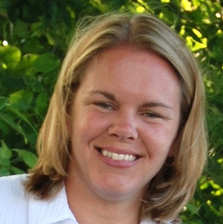The title of Chief Sustainability Officer is a relatively new one—the first CSO of a publicly traded company, Linda Fisher of DuPont, was appointed in 2004. It was two more years until Ed Fox became CSO at Pinnacle West in 2006. Out of roughly 7,000 publicly traded companies found on NYSE or NASDAQ, only 29 currently utilize the title and resulting influence of Chief Sustainability Officer. While other companies surely use different titles and organizational reporting, The Weinreb Group focused on these 29 leaders in their study CSO Back Story: How Chief Sustainability Officers Reached the C-Suite.
The Weinreb Group is an executive recruiting and consulting firm with more than fifteen years of experience in sustainability, yet CEO Ellen Weinreb could find no consistent definition of the education, responsibilities and scope of the role of CSO. CSO Back Story examines the backgrounds, abilities, and influence of current CSOs to show what these trailblazers have accomplished without a blueprint and tell, in their own words, what they’ve learned.
Key findings show that:
- CSO is an effective c-suite role with more being appointed each year
- CSOs have a deep knowledge of their company and industry and have been at their companies an average of 16 years before appointment (only four CSOs were outside hires)
- CSOs have very few direct reports (an average of 4.2) yet manage to influence behavior company-wide
- 90 percent of CSOs are one or two steps removed from the CEO (10 out of 29 report directly to the CEO and 16 report to another c-level executive such as the COO or CMO)
- CSOs have a diverse educational background – only four have MBAs
- CSOs are involved in overall corporate decision making with nearly half (12) serving on an executive committee determining all corporate strategic decisions (not just sustainability)
Organizations told Weinreb that the increasingly high profile of sustainability and technical requirements of sustainability reporting for entities like the Carbon Disclosure Project and the Global Reporting Initiative played a part in deciding that a senior-level executive needed to be in charge. The elevation of the role of Chief Sustainability Officer to a c-suite role made an impact on both employees and stakeholders. It signified that the organization was serious about sustainability. Scott Wicker of UPS said, “I had no idea how much impact this would have internally on employees. The company’s commitment to sustainability finally sent the right signal to all the departments.”
Weinreb conducted in-depth interviews of five CSOs to learn more about their overall experience. Each agreed that a vital part of the CSO’s role is the ability to effect change across business areas. Kathrin Winkler of EMC said, “Your job is to catalyze change top-down and horizontally in a way that reaches every area of the organization. It is a significant undertaking and it takes a complex governance structure to make it all work.”
Additionally, the challenges keep changing and keep coming. Charlene Lake of AT&T said, “Sustainability programs aren’t the kind that finish. They are ongoing and can always be improved with innovation being an important element. The ability to see programs outside the company that can be translated into sustainability efforts is incredibly critical.”
Another common denominator is the CSO’s knowledge of their business and industry. Those interviewed agreed that in order to be effective, the CSO needed strong relationships and an understanding of who the key decision makers are within the organization in order to utilize their lean resources to drive the most change.
With diverse backgrounds, skills, experience and education, Weinreb demonstrates that there is no single road to the CSO chair, and she believes “that’s a huge opportunity for sustainability professionals.” The study is intended to be a guideline for organizations looking to elevate their own chief sustainability officer, so many more CSOs will likely be named in the near future. Organizations that have created this position “without exception have felt the advantage and benefits of the role, with several revising their governance structure around it.”
Download the report at weinrebgroup.com.

Andrea Newell has more than ten years of experience designing, developing and writing ERP e-learning materials for large corporations in several industries. She was a consultant for PricewaterhouseCoopers and a contract consultant for companies like IBM, BP, Marathon Oil, Pfizer, and Steelcase, among others. She is a writer and former editor at TriplePundit and a social media blog fellow at The Story of Stuff Project. She has contributed to In Good Company (Vault's CSR blog), Evolved Employer, The Glass Hammer, EcoLocalizer and CSRwire. She is a volunteer at the West Michigan Environmental Action Council and lives in Grand Rapids, Michigan. You can reach her at andrea.g.newell@gmail.com and @anewell3p on Twitter.














